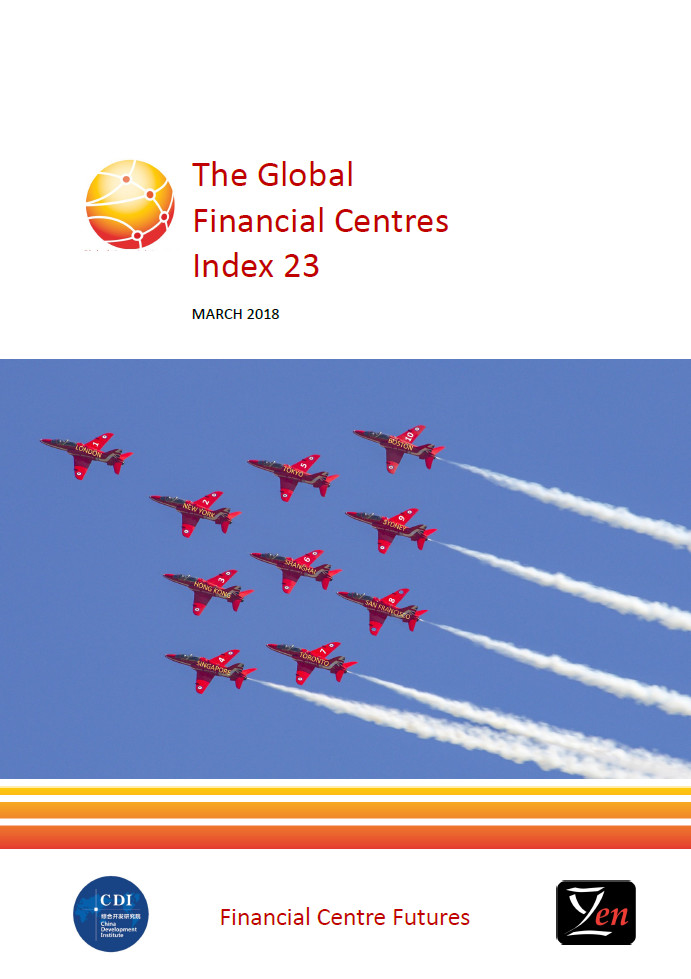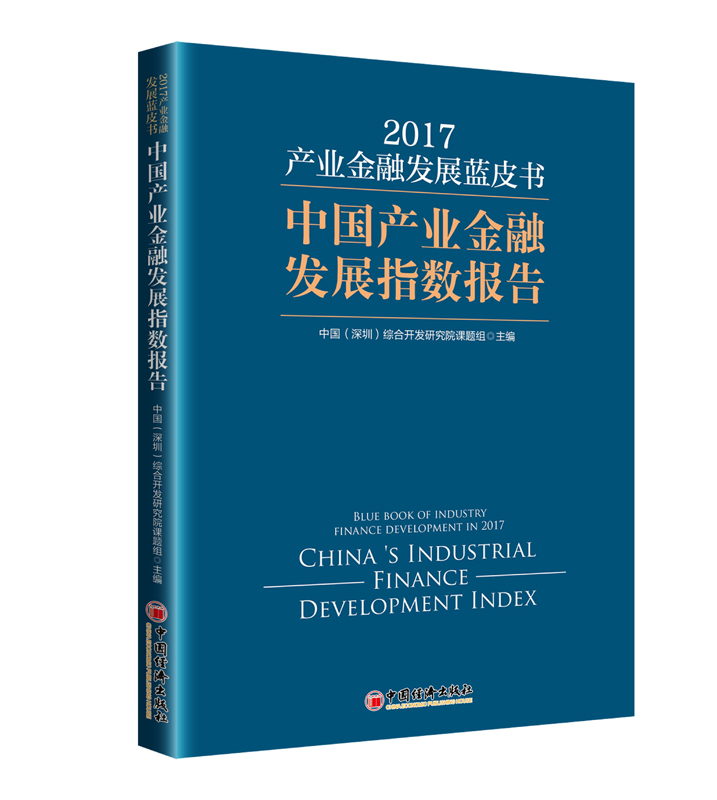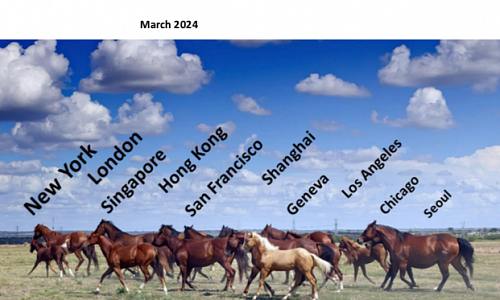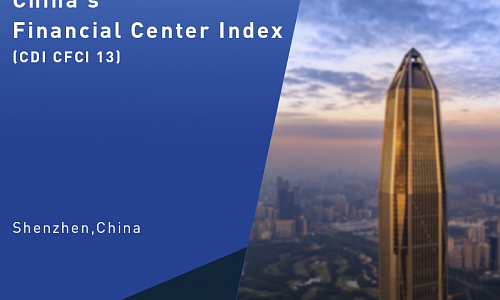Exchanges between Two Bay Areas Boost Innovation Cooperation
 CDI held an innovation roundtable with Mr. Del Christensen, Chief of Business Development of Bay Area Council, to discuss cooperation between the Guangdong-Hong Kong-Macao Greater Bay Area and San Francisco Bay Area on March 14. The two organizations exchanged views on technology innovation, emerging industries, talents in the two Bay Areas and explored opportunities to do joint research and co-host events.
CDI held an innovation roundtable with Mr. Del Christensen, Chief of Business Development of Bay Area Council, to discuss cooperation between the Guangdong-Hong Kong-Macao Greater Bay Area and San Francisco Bay Area on March 14. The two organizations exchanged views on technology innovation, emerging industries, talents in the two Bay Areas and explored opportunities to do joint research and co-host events.
Consultation on Mutual Benefits Strengthens Eurasia Cooperation Ties
 On March 23, CDI and the Italian Institute for International Politics jointly held the roundtable discussion in Milan, Italy, to explore the new cooperation mode between Asia and Europe. Participants from different countries reached a consensus that the “Belt and Road” Initiative shall be served as coordination bond of the Eurasia multilateral cooperation mechanism. China and the EU can also join hands to seek more cooperation opportunities in third-party markets through deepening political mutual trust. Moreover, the cooperation between China-EU should deliver more benefits to people from countries along the “Belt and Road” and strive to give new impetus into Eurasia cooperation and economic globalization.
On March 23, CDI and the Italian Institute for International Politics jointly held the roundtable discussion in Milan, Italy, to explore the new cooperation mode between Asia and Europe. Participants from different countries reached a consensus that the “Belt and Road” Initiative shall be served as coordination bond of the Eurasia multilateral cooperation mechanism. China and the EU can also join hands to seek more cooperation opportunities in third-party markets through deepening political mutual trust. Moreover, the cooperation between China-EU should deliver more benefits to people from countries along the “Belt and Road” and strive to give new impetus into Eurasia cooperation and economic globalization.

The Global Financial Centres Index 23 (GFCI 23)
 Click here to download the full report as PDF.
Click here to download the full report as PDF.
Z/Yen Partners and CDI published the twenty-third Global Financial Centres Index (GFCI 23) on the Launch Conference which was held in Qingdao on March 26.
The GFCI rates 96 financial centres in current issue. There is an overall increase in confidence for the leading centres with the top 25 centres all rising in the ratings.
London, New York, Hong Kong, Singapore and Tokyo remain the five leading global financial centres. The gap between London and New York in ratings closed to one point on a scale of 1,000. London’s rating rose less than the other four top centres. There is now less than 50 points between the top five centres.
The number of financial centres across the Chinese mainland in the main index has increased from 7 to 8 with the addition of Tianjin from the associate centres list. Among them, Shanghai remains at the 6th place. Ranking 11th, Beijing fell slightly by one place, but the gap between Beijing and Boston, which ranks 10th, in ratings was only one point on a scale of 1,000. Shenzhen, Guangzhou, Qingdao and Chengdu rose 2, 4, 14, and 4 places respectively. The newcomer Tianjin ranks at the 63th place. Dalian continuously dropped to 96th.
Mark Yeandle, Director of Z/Yen Partners and the author of the GFCI, said "All the top centres have risen in the ratings. London remains on top despite Brexit concerns but rose less than any other centre in the top fifteen."
Zhang Jiansen, Research Director of Finance and Modern Industry Department of CDI, said "Competitiveness of the Chinese financial centres will be further unleashed with the gradual reform and opening-up of China’s financial market.
External Accounts Are Balancing
 The ex-factory price index of industrial products was up 4.3% y/y in January, down 1.6 pps from Q4 2017. PPI was up 5.2% y/y, down 1.9 pps. Given tightening monetary policy, we expect producer prices will continue their downward trend in 2018. Due to the Spring Festival – the Chinese New Year -- many statistics are still unavailable. We can only analyze data from imports and exports, and on financial conditions and price levels. CPI was up 1.5% y/y in January or 2% y/y after correcting for the Spring Festival factor, slightly higher than in Q4. Similarly, with tightening monetary policy, a CPI increase at this high rate of 2% is not sustainable. Trade growth is within normal range, after adjusting for the holiday factor. Imports were up 36.9% y/y. This very high growth rate was instantly adjusted for the holiday effect to 13.2% y/y, in a normal range instead. Exports were up 9.7% y/y after the holiday adjustment, up 0.5 pps from last December. The M1 money supply was up 15% y/y at the end of January. Considering that the holidays came late this year, the adjusted M1 growth rate was even lower than in December. The general declining trend has not changed. M2 money supply was up 8.6% y/y, lower than almost all months in 2017. RMB loans from financial institutions were up 13.2% y/y. Savings deposits from non-financial enterprises were up 12.1% y/y. These two relatively high growth rates were the main ones affected by the holiday. In January, the societal financing scale fell -17.2% y/y. In particular, the increase outside of RMB loans fell -74% y/y, with a share of only 12.1%. These are immediate outcomes of recent financial regulation tightening, and of de-leveraging efforts.
The ex-factory price index of industrial products was up 4.3% y/y in January, down 1.6 pps from Q4 2017. PPI was up 5.2% y/y, down 1.9 pps. Given tightening monetary policy, we expect producer prices will continue their downward trend in 2018. Due to the Spring Festival – the Chinese New Year -- many statistics are still unavailable. We can only analyze data from imports and exports, and on financial conditions and price levels. CPI was up 1.5% y/y in January or 2% y/y after correcting for the Spring Festival factor, slightly higher than in Q4. Similarly, with tightening monetary policy, a CPI increase at this high rate of 2% is not sustainable. Trade growth is within normal range, after adjusting for the holiday factor. Imports were up 36.9% y/y. This very high growth rate was instantly adjusted for the holiday effect to 13.2% y/y, in a normal range instead. Exports were up 9.7% y/y after the holiday adjustment, up 0.5 pps from last December. The M1 money supply was up 15% y/y at the end of January. Considering that the holidays came late this year, the adjusted M1 growth rate was even lower than in December. The general declining trend has not changed. M2 money supply was up 8.6% y/y, lower than almost all months in 2017. RMB loans from financial institutions were up 13.2% y/y. Savings deposits from non-financial enterprises were up 12.1% y/y. These two relatively high growth rates were the main ones affected by the holiday. In January, the societal financing scale fell -17.2% y/y. In particular, the increase outside of RMB loans fell -74% y/y, with a share of only 12.1%. These are immediate outcomes of recent financial regulation tightening, and of de-leveraging efforts.
Although China’s stock market has been hit by the recent huge volatility in the U.S. markets, China’s capital account seems to be shifting into balance. All of China’s external accounts turned to surplus in 2017, including the much worried-over FX reserve, adding $91.5 billion, from a $475.2 billion fall in 2016. The outside market is volatile, but Chinese growth is strong. The Chinese government is taking major steps to tackle any potential financial market disruption factors, as analyzed in detail in our recent reports. Based on these three factors, we expect in 2018 that the RMB-U.S. dollar exchange rate will be basically stable, that the capital account surplus will rise, and that foreign reserves will grow.
Keeping Sober-Minded about China’s Economy
 Author: Fan Gang, President of CDI
Author: Fan Gang, President of CDI
Editor’s Note: “As an economist, I am very proud of achievements of China’s economy. However, it is crucial to keep a realistic and sober amidst the chorus of praise. There will be something wrong if we do not address problems facing China’s economy,” said Prof. Fan Gang.
Recently, especially since the beginning of 2018, public opinions in domestic and abroad have seen a great change from the previous decries to the current praises. The cover story in Time was titled “China won” and domestic opinion leaders also started to applaud the rise of China. It is however crucial to keep a realistic and sober amidst this chorus of praise.
Indeed, China has made great strides, especially in manufacturing. A short documentary made by KJ VIDS, a British media company, mentioned that by 2005, the construction area of China in every two weeks is as big as today’s Rome. Moreover, the production value was able to create one Greece every 16 weeks and one Israel every 25 weeks. Despite these great achievements, we need to be aware of the existing problems. For example, China’s per capita GDP in 2017 was 9600 US dollars, making China rightfully a middle-income country. However, it was less than 20% of that of the United States. Problems will arise without a sober mind towards addressing our weaknesses.
One neglected achievement is that China’s economy has maintained high growth rate in 40 years with no crises, which is unprecedented in the world. Developed countries, in the early years of rapid development, saw economic crises every 10 years or so. China’s economy also has its cycles, with highs at around 14% and lows at 6%. What has made China’s economy unique in the world is that it has never experienced major economic crises or recessions. This is partly due to lessons learned from the bursting of bubbles and financial crises experienced by developed countries over the past four decades.
Economic landscape and growth of China
China’s economy went through a cycle in the 1990s, got over-heated from 1992 to 1994, experienced a five-year downturn from 1995 to 1999 and remained mired in a soft patch from 2000 to 2002 until finally recovering after the SARS outbreak in 2003. The second overheating came in 2005 and lasted till 2007. China went through a self-imposed restructuring as the world was hit by a financial crisis in 2008, and saw a periodic peak between 2009 and 2010 due to economic stimulus. Another downturn was experienced from 2011 onwards until the economy touched the bottom in 2016 and started to warm up slightly in 2017; however, the economy was not bouncing back and would still stumble at the bottom for a while with certain unsolved issue.
In the short term, China’s economy will maintain a 6.5-7% growth rate with a neutral macroeconomic policy without either stimulus or tightening, which will facilitate ongoing reform and restructuring before entering the next round of growth. It is thus important to see economic growth from a periodic point of view, and regard economic downturns as fluctuations. One thing that is worth noting is that it takes longer for China’s economy to complete the process of soft landing than to restructure during crises. In the long term, we should be fully aware of the challenges facing China’s economy, including rising labor and environmental cost, a widening income gap and a global landscape under newly emerged risks.
Potential is huge too, with per capita GDP at only 9000 US dollars, industrialization rate less than 70% and 30% of the labor force living primarily on agricultural income. Only 55% of Chinese people lives in cities and 70% of the population are low-income people, half of whom being farmers and half being migrant workers. Overall, China has low levels of consumption and high savings rate, with family consumption representing a mere 30% of the GDP. We shall have confidence in exploring this potential.
Changes in global landscape
External environment is a major source of uncertainties at present. Positively, developed countries have seen strong recovery driving China’s exports. The Federal Reserve has raised interest rates and then China introduced a combination of policies by raising interest rate and lowering required reserve ratio, which remained neutral.
The “Trump effect” has indeed contributed to the rise of protectionism. What Trump does remind governments around the world of the need to reduce tax burdens on businesses, which is good. He deems that Chinese government has been correct in taking advantage of other countries for the interest of Chinese people, while the US government has failed to do so for the interest of its people, which is why he tries to make up for this gap. In future, he is likely to take measures in trade.
Does this mean a retreat of globalization? At first, globalization was advocated by developed countries. Their governments represented the interest of multinationals and domestic capital to promote globalization around the world. After realizing that globalization was against their interest, their domestic workers protested against this trend. However, at present, multinationals with global presence are still playing a crucial role in allocating resources worldwide as the drivers of globalization. A decade ago, developing countries had reservations about globalization, as they feared over the prospect of being dominated by multinationals and losing opportunities for job growth. Later on, however, as they found globalization actually contributed to their economy, they, including China, turned to be advocates of globalization.
China wishes to continue to attract foreign capital to gain know-how for its own development and many policies recently rolled out by the Chinese government encourage foreign capital to enter China by improving business environment. At the same time, China has also entered the stage of going global. High savings rate over the past two decades has accumulated a significant amount of capital, which will only lead to excess capacity if invested in the domestic market. Therefore, Chinese businesses should now compete in the world market and utilize global resources to seek new growth engines. China benefits from and advocates globalization, which will certainly continue to grow despite such setbacks as the rise of trade protectionism and short-term retreat.
New growth momentum
First, business environment. China’s policies are increasingly pro-innovation and pro-entrepreneurship, with more tolerance of problems that might arise from innovation. For instance, the messy outcome of bike sharing is unimaginable in many countries, but is treated with tolerance in China. In China, new things get a chance to survive, and when there is a problem, supervision follows. In the next few years, a big share of China’s growth will come from innovation and entrepreneurship.
Second, the development of financial systems, especially direct financing mechanisms. In the past, businesses took out loans from banks, but now they have more options, such as venture capital, PE, or selling equities. Finance plays a fundamental role in spurring innovation and entrepreneurship and the development of the financial system will come as an engine for economic growth in future.
Third, consumption growth. In the past, people born in the 1980s and 1990s used to be the main force of consumers, while retirees, who had little disposable income, spent very little. Things are different today. The wealthier generation begins to retire, and with both time and money, starts to consume more, transforming the country’s consumption pattern.
Fourth, manufacturing development. The improved quality of some Chinese manufacturers will contribute to a stronger image of “made in China”, instead of being a synonym for shoddy products. With improved consumer confidence in our products, the manufacturing sector will embrace a new round of growth.
Industrial development
First, that all industries have potential for growth does not mean all enterprises enjoy the same prospects, as they would experience constant mergers and restructuring. In the end, big enterprises will become even bigger and small enterprises will get merged into bigger ones. Enterprises shall fully consider how they would be merged so as to improve their production and innovation capacity. Research on the overcapacity in the steel industry in the American history suggests that the cause is vicious competition for resources among private enterprises during rail construction. J.P. Morgan played a dominant role in the mergers of the US steel companies with over 700 companies organized the steel industry and 200-300 companies out of business, which is a classic example of mergers. Trump once said that he enjoyed economic slumps when is a good time for mergers. Mergers and acquisitions are the destiny of many businesses. This is a good thing, as businesses can channel the return on investment into new undertakings.
Second, the manufacturing sector still has huge potential. In the 1980s, Korea was concerned about the industrial hollowing-out effect, worried that it would experience recession when industries move to China. However, the Korean economy has proved otherwise, gradually advancing to high-end growth. This rule also applies to China. We will be able to move forward as our manufacturing sector continues to climb the value chain.
Third, application of new technologies, and in particular, the internet. The internet is a public technology and serves every individual, company and industry, which makes it crucial for industries to keep pace with the information trend.
Fourth, professionalism and dedication. Successful companies are invariably those that are dedicated to their businesses and persevere for a long time, a quality that is indispensable in pursuing craftsmanship and an upgraded version of “made in China”.
Strong Coordination Mechanism to Boost the Greater Bay Area
 Author: Guo Wanda, Executive Vice President of CDI
Author: Guo Wanda, Executive Vice President of CDI
Editor’s Note: Cross-regional coordination mechanism and legal arrangements under the “one country, two systems” framework have great significance in boosting the development of the Guangdong-Hong Kong-Macao Greater Bay Area, in which Shenzhen as a transportation hub and innovation engine will play an instrumental role.
The Greater Bay Area has gone beyond administrative divisions, and its development needs the support of the central government and the coordinated and collaborative development of cities in different regions. In this sense, it is crucial to have top design plus regional coordination and institutional arrangements in the Greater Bay Area. First, the general planning of the Greater Bay Area is a public good, and shall thus be dominated by the government. Second, the future industrial development in the Bay Area shall be driven by the market and businesses, leveraging the force of both government and market.
At the same time, legal arrangements under the framework of “one country, two systems” have great significance for promoting an integrated market of the Guangdong-Hong Kong-Macao Greater Bay Area. As the Greater Bay Area involves Hong Kong and Macao with different customs territories and legal systems, the authorities of Guangdong, Hong Kong and Macao can refer to the EU system in building a common legal framework under which all regulations can be implemented, so as to facilitate the flow of people, goods, capital and information, etc., within the Bay Area.
Shenzhen is uniquely positioned and plays a very important role in the future development of the Greater Bay Area. On the one hand, Shenzhen shall continue to enhance transportation infrastructure, such as the “Bay Area Loop Line” to extend the influence of Shenzhen across the region; on the other, Shenzhen shall encourage its industries to capitalize on the premium higher education resources of Hong Kong so as to give full play to the Hong Kong-Shenzhen Metropolitan Area as an engine for innovation.
Housing policies evolve to suit changing market
Concern over speculation persists as sector undergoes structural shift
Cities across China are still announcing policies to crack down on real estate speculation, but experts said they sense that changes are coming, especially when it comes to "one-size-fits-all" regulations.
Beijing will persist with housing regulation in 2018 to prevent property speculation, the Beijing Daily reported on Sunday, citing Xu Jianyun, director of the Beijing Municipal Commission of Housing and Urban-Rural Development.
Also on Sunday, the Xinhua News Agency reported that Beijing had closed more than 1,000 illegal property agencies since it rolled out house purchasing limits in March 2017.
The government of Southwest China's Chongqing Municipality has said that it will not relax its real estate regulations, which will be "continuous and stable" this year, chinanews.com reported on Friday.
Chongqing will also deepen reforms to meet first-time buyers' demand while suppressing property speculation, the report noted.
Song Ding, a research fellow at the China Development Institute, said that the property regulations announced around the nation since 2016 were not meant just to lower prices or cool the market. They were all part of a larger supply-side reform in the real estate sector.
According to Song, commercial residential buildings have made up most of China's housing supply in recent years, but that situation has also led to problems such as surging prices. The government wants to multiply housing supply channels by measures such as developing the public housing sector. But this can hardly be achieved if capital is tied up in housing speculation.
"As long as the government wants reforms to take root, it will continue cracking down on housing speculation," Song told the Global Times, adding that the tight regulations might stay in place this year.
Hui Jianqiang, research director with real estate information provider Beijing Zhongfangyanxie Technology Service, also stressed that China's regulation of the real estate industry in first-tier cities is a "long-term, or at least medium-term" policy.
The governments of Beijing and Chongqing have stressed that they will develop the rental housing markets in 2018, according to media reports.
The government strategies in places such as the Xiongan New Area in North China's Hebei Province and other new towns will provide ample development opportunities for the real estate market, Song said. "The housing market is undergoing a structural change, but on the whole investment and (government) support in the sector has not shrunk at all," he noted.
But Song also stressed that though policies governing the sector are tight in general, they are likely to become more flexible in the future.
"Housing policies used to be relatively uniform, but signs have emerged that the central government is giving more scope to local governments to make policies better tailored to local conditions," Song said.
Certain regions in China have started to loosen restrictions. For example, Lanzhou, capital of Northwest China's Gansu Province, on January 5 said it had lifted purchase limits in several of outlying areas.
These moves that show that "policies are becoming more specific and mature," Song said, adding that because of such flexibility, house prices or sales might rebound a bit in 2018.
The prices of new residential units and second-hand houses in first-tier cities fell 0.1 percentage point and 0.4 percentage point, respectively, in December compared with November, the 15th month of declines, data from the National Bureau of Statistics showed on January 18.
Hui told the Global Times on Sunday that under the government's regulations, the property market will likely grow in a more stable manner in 2018.
"I think housing prices in 2018 will depend on the tug-of-war between markets and government regulations," Hui said, adding that if housing prices continue to drop due to government regulations, the market will play little role.
Pessimism Notwithstanding, Growth Picks Up
 Growth was robust and stable throughout 2017, even as fixed asset investment and consumption kept weakening. Exports rose, after two years of decline. Producer prices were elevated, while CPI showed little volatility. Monetary policy returned to moderately neutral levels, from its previous tight condition, and the money supply plunged.
Growth was robust and stable throughout 2017, even as fixed asset investment and consumption kept weakening. Exports rose, after two years of decline. Producer prices were elevated, while CPI showed little volatility. Monetary policy returned to moderately neutral levels, from its previous tight condition, and the money supply plunged.
GDP was up 6.9% for the year, and up 0.2 pps from 2016. Growth was consistent in quarterly terms, at 6.9% y/y in Q1 and Q2, and 6.8% y/y in Q3 and Q4. Value added for primary industry rose 3.9% in 2017, up 0.2 pps from 2016; manufacturing industry was up 6.1% y/y, flat on 2016; and services rose 8% y/y, up 0.2 pps. Industrial output rose 6.6% y/y, up 0.6 pps, though growth has been slowing. Fixed asset investment was up 7.2%, down 0.9 pps from 2016. After removing the price factor, investment was up 1.3% y/y, down 7.4 pps from 2016. Real estate sales turned from heating to cooling, the 19.5% y/y rise in Q1 falling to just 2.5% y/y by Q4, adding another factor in investment drop. Exports, conversely, picked up, rising 7.9% y/y, up 15.6 pps from 2016. Producer prices continued last year’s appreciation trend. The ex-factory price of industrial goods rose 6.3% y/y, and PPI rose 8.1% y/y. CPI rose 1.6% y/y, down 0.4 pps from 2016. The main financial indicators experienced major decreases. By the end of 2017, M2 rose 8.2% y/y, down 3.1 pps from 2016; M1 rose 11.8% y/y, down 9.6 pps from 2016.
This year begins with intensive financial regulations. On January 5th and 6th, China’s Bank Regulatory Commission issued three documents aimed at strengthening commercial bank regulation, related to trusted loans, bank equity and the too–big-to-fail mentality. These rules are responses to the central government’s main goal, set at the end of 2017 for 2018, to contain financial risks. On December 20th, the central government listed alleviating financial risk as one of the top three tasks facing central government. This again is a continuation of the central committee meeting about financial risk in mid-2017, led by President Xi Jinping.
We view the potential financial risks in China as containable, as the regulators have recognized the problems, and are determined to take serious steps to deal with them. Shadow banking as part of financial liberalization requires prudential regulation. The Chinese government has the capability, and the advantage of designing regulation by absorbing the lessons of U.S. 2008 subprime mortgage crisis.
Shenzhen's 2017 GDP to top $340 bln
Shenzhen's gross domestic product is expected to grow 8.8 percent year-on-year to exceed 2.2 trillion yuan ($340 billion) in 2017, said mayor Chen Rugui in a government work report delivered Wednesday to the local people's congress as reported by China News Services.
This means the southern Chinese city will overtake Guangzhou, capital of Guangdong province, in GDP once again. Guangzhou reported a 2.15 trillion yuan GDP for 2017.
The city surpassed Guangzhou in 2016 for the first time as its revised GDP, which factored in previously uncalculated expenditures on research and development, topped 2 trillion yuan, ranking third among all cities nationwide.
Continuous input in R&D is one of the major highlights of Shenzhen's economic growth, said Cao Zhongxiong, executive director of the New Economy Research Center of the China Development Institute.
The city is home to Fortune Global 500 companies such as Tencent Holdings Limited and Huawei Technologies Co Ltd. It is also a hub of innovation that is gaining increasing global influence. At the just concluded Consumer Electronics Show (CES) 2018 held in Las Vegas, more than 600 companies from Shenzhen participated, accounting for nearly a half of the Chinese exhibitors.
Statistics show the average profits of enterprises above designated scale in Shenzhen soared 22.7 percent year-on-year, while the per capita disposable income of local residents rose 8.8 percent.
China’s Industrial Finance Development Index
 The index examines China’s industrial finance using 64 indicators in the five broad areas of capital support, structure optimization, service efficiency, innovation and resilience. The term of industrial finance in the book refers to financial services which directly support the real economy. The book is aimed at exploring financial reform and innovation which can improve the quality of financial services.
The index examines China’s industrial finance using 64 indicators in the five broad areas of capital support, structure optimization, service efficiency, innovation and resilience. The term of industrial finance in the book refers to financial services which directly support the real economy. The book is aimed at exploring financial reform and innovation which can improve the quality of financial services.








